COLMAN (or COLEMAN), WILLIAM DEAN (1827-1862). Major, 6th Missouri Infantry. Colman, who was born in Massachusetts and served in the Mexican War, was commissioned into the 6th Missouri Infantry’s Field and Staff in 1862. On June 14, 1862, Brigadier General David S. Stanley, United States Army, commended Major Colman for his “cheerful and constant assistance” in his field report describing the difficult conditions endured by troops in the Army of the Mississippi, “The labor of road-making, of camp labor, of marches through heat and dust, of privations in short rations, in bad clothing, in bare feet, all I am happy to report borne with patience and cheerfulness, have shown that our young soldiers already begin to appreciate Napoleon’s maxim, that ‘the first quality of a soldier is constancy in enduring fatigue; that poverty and privation are the soldier’s school.’”
Civil War Bio Search
Colman was mortally wounded on October 4, 1862, at the Battle of Corinth, Mississippi. On October 13, 1862, Brigadier General David Stanley once again cited him, “In my military family I suffered an irreparable loss in the death of Capt[ain] W[illiam] D. Colman, assistant adjutant-general, a soldier by nature, a man of rare habits of industry and application, having one thought highly prized beyond all else, viz, duty. He had gone through all the battles from Vera Cruz to the city of Mexico to fall at last by the hands of his false countrymen…” Interment at Green-Wood was on October 5, 1863. Section 78, lot 14013.

COLSH (or COLCH), DAVID (1829-1870). Private, 6th New York Cavalry, Company B. Originally from Ireland, he enlisted on August 7, 1862, at New York City, as a private, and mustered into the 6th Cavalry that same day. Also borne on the muster rolls as David Colch, he was a stableman who was 5′ 10″ tall with hazel eyes, dark hair and a fair complexion. Listed as absent at Dismount Camp on October 31, 1864, he mustered out of service on June 5, 1865, at Cloud’s Mills, Virginia. He last resided at 577 Grand Street, Manhattan. His death was attributed to cancer. In 1896, Mary Colsh filed for a widow’s pension, application 643,448, but there is no certification number. Section B, lot 9895, grave 810.
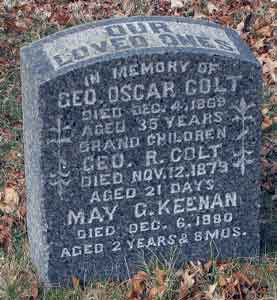
COLT, GEORGE OSCAR (1834-1869). Sergeant, 56th Regiment, New York State National Guard, Company K. Colt, who was born in New York City, married Frances Augusta Snow there in 1855; the couple had three children. He is identified as an engraver in the Brooklyn Directory for 1857-1862; during those years, he lived at 1 Conselyea Street. During the Civil War, he enlisted in the 56th National Guard for 30 days in 1863 as a private. The following year, he joined the same regiment and company as a sergeant when the unit was reactivated for 100 days. After the War, he lived on 75th Street in Manhattan and worked at 3 Crosby Street where he engraved brass tips for hats and other accessories. The 1868 New York City Directory indicates that he worked with George W. Anderson at 188 Fulton Street.
The circumstances of his death were reported in The Sun on April 14, 1870, when his body was discovered in a water-closet in the yard of his multi-family dwelling. Apparently, his wife reported him missing after he failed to return home from work on December 4, 1869. A seven-year-old boy saw a body lying on the floor of the outhouse, told his mother repeatedly but no action was taken until the child reported the sight to another tenant who told the landlord. When the door was forced open, Colt’s frozen body was found and identified through papers on his person. Apparently, his wife had no key to that outhouse and no one looked there because it was locked. His online biography notes that his wife had to move from that apartment because she had no income after his disappearance.
A coroner’s inquiry concluded that there had been no foul play and indicated heart disease as the cause of death. His wife indicated that he fell off a fire wagon months before (while on duty with insurance patrol no. 3) but that was discounted as a cause of death. Colt belonged to the Old Fire Department of New York, serving on Engine No. 8. In 1890, Frances Colt applied for and received a widow’s pension, certificate 324,565. Section 127, lot 17931, grave 203.
COLTON, FREDERICK CUSHMAN (1844-1935). Private, 52nd Massachusetts Infantry, Company C. Colton, who was born in Amherst, Massachusetts, and resided in Easthampton, Massachusetts, was employed as a clerk when he enlisted as a private on September 9, 1862. On October 2, he mustered into the 52nd Massachusetts from which he mustered out on August 14, 1863, at Camp Miller at Greenfield, Massachusetts.
He was a vice president of the Brooklyn Trust Company before he retired. At the time he applied for a passport in 1912 for a trip of six months with his daughter, he described himself as 5′ 3″ tall with hazel eyes, black hair tinged with gray, a narrow face, high forehead, slightly drawn mouth, prominent chin and slightly dark complexion. In 1907, he was awarded a pension, certificate 1,139,433. His last residence was 119 East 6th Street in Plainfield, New Jersey. Colton died from bladder cancer. Section 82, lot 2746.
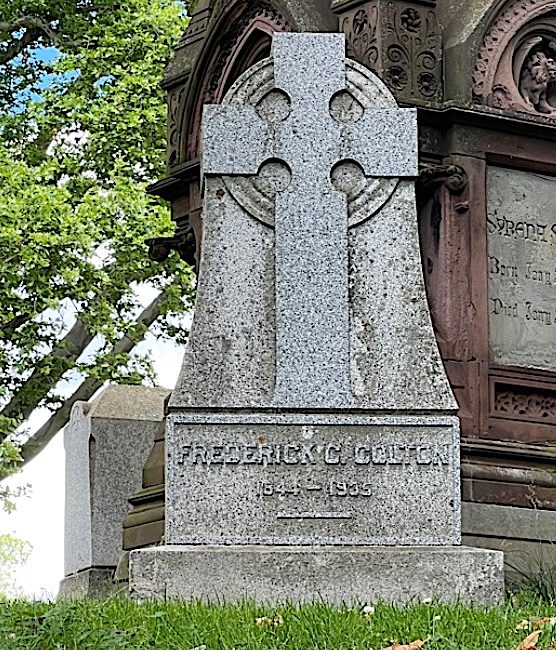
COLTON, FREDERICK HENRY (1840-1912). Assistant surgeon, United States Army. Born in Longmeadow, Massachusetts, he was educated at Phillips Academy in Andover, Massachusetts, and graduated from Yale, class of 1860, where he was a member of the varsity crew team. As per his obituary, a photograph of his crew team, the first to beat Harvard, was displayed at the Yale Club in Manhattan. After teaching for a year in Brooklyn, Colton earned a medical degree from Long Island College Hospital in 1863. During the Civil War, Colton enlisted as an assistant surgeon in the United States Army that year, served from 1863 to 1865, and was assigned to Army Hospitals in the Washington, D.C.
On October 25, 1865, Colton married Alice Gray, the daughter of Reverend Alonzo Gray, the principal of the Brooklyn Heights Seminary for Girls. Returning to Brooklyn after the War, he opened a general practice there and was a visiting physician at numerous hospitals including the Long Island College Hospital, St. John’s Hospital, and the Brooklyn Home for the Aged for more than 30 years. He is listed as a physician in the Brooklyn Directories for 1867-1870, 1873-1876, 1880-1882 and 1890-1892. Colton’s wife, who is interred with him, died in 1890; the couple had five sons and four daughters.
Active in civic life, he belonged to the New England Society in Brooklyn, the Long Island Historical Society and was president of the board of the Brooklyn Eye and Ear Hospital. According to his obituary in the Brooklyn Daily Eagle, which confirms his Civil War service, he also belonged to the Kings County Medical Society, the Practitioner Club, the Brooklyn Institute of Arts and Sciences and the Hamilton Club. In addition, he was a deacon of the Church of the Pilgrims. His last residence was 136 Montague Street in Brooklyn where he had his home and office for a half-century. Dr. Colton died from heart disease. Section 8, lot 11662, graves 6 and 7.

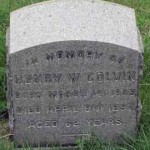
COLVIN, HENRY W. (1835-1897). Drum major, 1st New York Infantry, Companies D and F. A native of New York, Colvin enlisted as a private and mustered into Company D of the 1st New York on April 23, 1861. He was transferred to Company F on May 8, 1861, promoted to drum major and transferred into the Field and Staff on October 1, 1861, reduced to ranks as a private on November 19, 1862, and transferred back to Company F that day. His service ended upon mustering out on May 25, 1863, at New York City.
According to the census of 1870, he was a carpenter; the 1880 census shows that he was employed in a saw mill. In 1891, he applied for and received an invalid pension, certificate 750,807. His last residence was 1075 Third Avenue in Brooklyn. His death was attributed to pneumonia. A minor received a pension (his wife died a few days before him), certificate 569,358. Section 59, lot 1669.
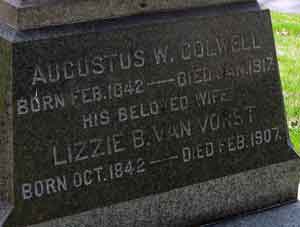
COLWELL, AUGUSTUS W. (1842-1917). Private, 37th Regiment, New York State National Guard, Company H. A native of New York City, Colwell came from a family of engineers who owned an iron foundry that bore the family name. His father, Lewis Colwell, founded the business on Charles Street in Manhattan in 1840. A graduate of the City College of New York, Colwell apprenticed in his father’s foundry in 1860 and became a molder.
The Colwell Iron Works had an adjunct establishment in Jersey City, New Jersey, that in conjunction with the Navy Yard there was instrumental in building ironclads during the Civil War. He enlisted as a private at New York City on May 29, 1862, mustered into the 37th Regiment that same day, and mustered out three months later at New York City on September 2. His biography in the Journal of the American Society of Mechanical Engineers (Volume 39) indicates that he served a second time with the same regiment and was its color sergeant.
Colwell returned to his father’s business after his military service, rose to superintendent and, after his father’s death, bought out his heirs to become president of the enterprise. Among the ventures of the foundry was perfecting machinery for sugar refining, prompting trips each winter to Cuba. When he applied for a passport in 1873 (he was a world traveler), he was 5′ 8½” tall with a high forehead, Roman nose, blue eyes, brown hair, round face and fair complexion. A pioneer in mechanical engineering, his inventions and advanced foundry practices led to his renown in the Americas. Much of his work helped modernize sugar plantations through the use of clarifiers and centrifuges.
According to the Journal of the American Society of Mechanical Engineers (Volume 39), Colwell also did work for New York City by patenting and establishing refuse crematories for the Department of Street Cleaning. In addition, his foundry assisted in the building of lighthouses along the East Coast, and he did work for the United States government to design machinery for the sorghum and glucose industries. The New York City Directory for 1876-1878 lists him in the iron business. At the time of the 1880 census, he was employed at an iron foundry. He is identified as a mechanical engineer in the 1896-1897 New York City Directory; the 1900 census indicates that was an engineer for a boiler company. Colwell retired from his business in 1906.
He was a member of the John A. Dix Post #135 of the G.A.R.; in 1886, he held the position of commander. In 1907, his application for a pension was successful, certificate 1,140,570. He was a charter member of the American Society of Mechanical Engineers. As per his obituary in the New York Tribune, members of the Dix Post were invited to attend his funeral. His last residence was on Arlington Avenue and 227th Street in the Bronx. Colwell died from diabetes. Funeral services were held at the home of his son, James, who lived at 1765 Sedgwick Avenue in the Bronx. Newspapers in Havana, Cuba, were asked to post a notice of Colwell’s death. Section 7, lot 9526, grave 2.
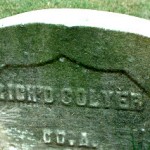
COLYER (or COLLYER), RICHARD (1822-1893). Private, 1st New Jersey Light Artillery, Battery A. Colyer was born in England. He was a jeweler who lived in Harrison, New Jersey, according to the census of 1860. He enlisted on September 3, 1864, mustered in on that date, and mustered out on August 7, 1865, at Newark, New Jersey.
The censuses of 1870 and 1880 show that he was still a jeweler but he had relocated to Jersey City, New Jersey. The Veterans Schedule of 1890 confirms his military service but lists his name as “Collyer.” In 1892, he applied for a pension, application 1,121,660, but he apparently died before it was certified. His last residence was at 615 Jersey Avenue in Jersey City. His death was caused by catarrh. Ann Colyer applied for and received a widow’s pension in 1893, certificate 374,375. A government-issued stone marks his site at Green-Wood. Section 75, lot 10098.
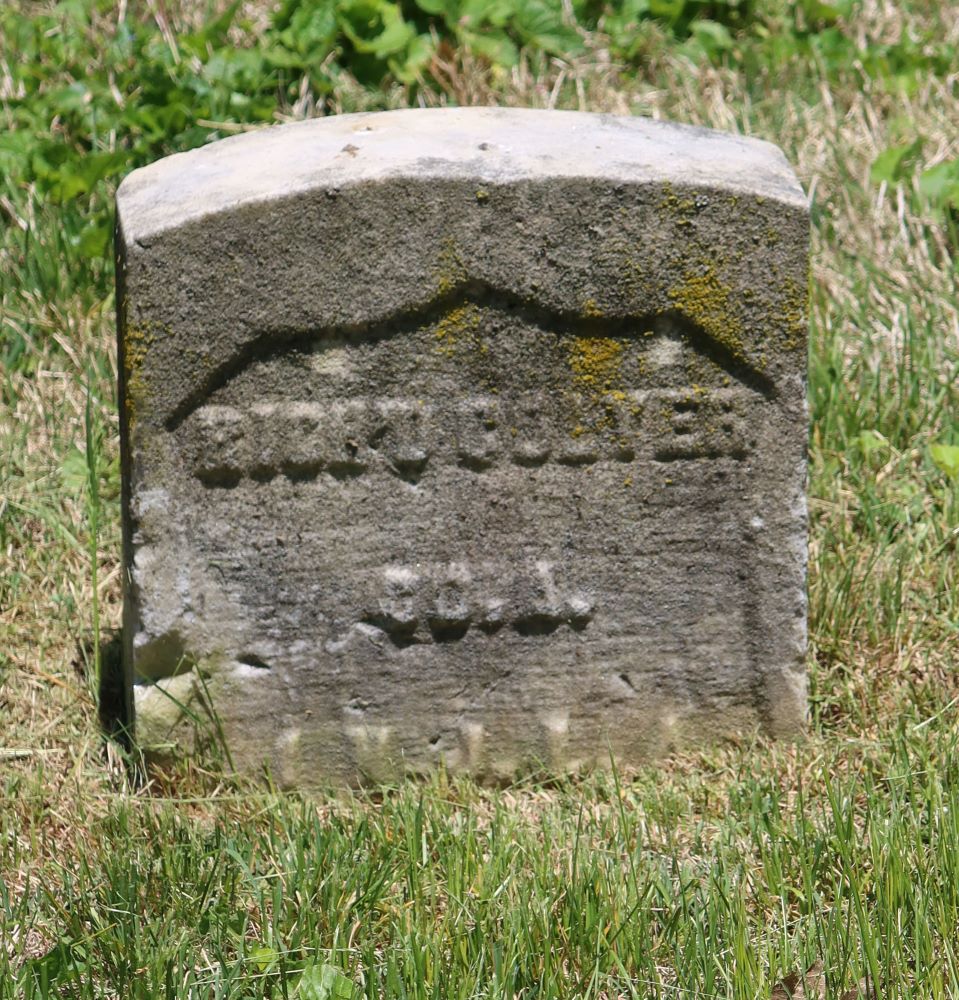
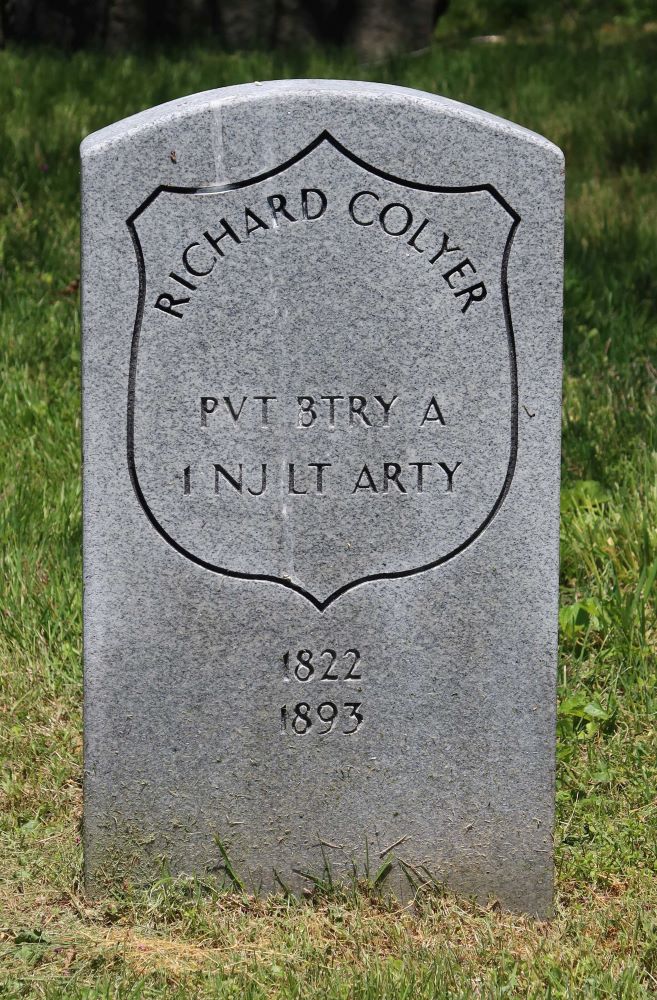

COLYER, VINCENT (1825-1888). Founder, United States Christian Commission. Born in Bloomingdale, New York, to a Quaker family, he studied art and became a member of the prestigious National Academy of Design in 1849. A man of great faith, Colyer was a founder of the United States Christian Commission during the Civil War. The Commission, founded after the first major battle of the War at Bull Run, Virginia, sought to give both religious support and social services to Union troops. Protestant ministers and the YMCA formed the core group that served on the battlefield without weapons and collaborated with the Sanitary Commission to minister to the men at the front.
A prolific writer who kept detailed accounts, Colyer’s Report of the Christian Mission to the U. S. Army (1862, reprinted by Pranava Press, New Delhi in 2008) was presented to St. George’s Church in New York and recorded his notes from the Battles of Bull Run in Virginia and Roanoke Island and Newbern, North Carolina. An agent of the Brooklyn Y.M.C.A, as of December 1861, the Christian Commission supplied hospital stores, books, prayer books, jellies, clothing and other comforts to the soldiers. Many were especially eager for reading material. A. A. Farr, chaplain of the 18th New York wrote to Colyer on October 25, 1861, “…The men love to read and it is my desire to cultivate this fondness for books. Intelligent men are what we want, and if you should choose to find another lot of miscellaneous books that can be obtained as were the others, send them to me and I will see that they are put into circulation in our regiment. We are anxious to increase our library as fast as possible and to do this we must rely on the benevolence of the friends of the soldier.” In all, Colyer collected and distributed over $27,000 in money and materials in the 16 months that he headed the Christian Commission.
Colyer was appointed superintendent of the poor (including poor whites) under General Ambrose Burnside at New Berne, North Carolina, and wrote Report of the Services Rendered by the Freed People to the United States Army in North Carolina, in the Spring of 1862, After the Battle of Newbern (1864). In the report, he described the work that he did upon his appointment:
My first order from General Burnside under this appointment, was to employ as many negro men as I could get, up to the number of five thousand; to offer them eight dollars a month, one ration and clothes, to work on the building of forts. This Order remained standing on my books up to the day I left the Department with the General, July 6th, without ever being able to fill it. At the time I left, there were not over twenty-five able-bodied men within our lines; so that it will be readily understood why the negroes were never a burden on our hands. The truth was, we could never get enough of them; and although for a little while, there were a few more at Roanoke Island than were wanted there after the Fort was completed, they were brought to Newbern as soon as it was known.
Colyer established hospitals, churches and schools and complimented the men and women for their industriousness, help in foraging for supplies, cooking and baking for the troops, etc. He understood the comfort that the African Americans took in religion, noting, “…In the evenings after the toils of the day are over, you will hear from the cabin of nearly every family, the sweet sound of hymns, sung with plaintive and touching pathos to some familiar tune, and listen quietly as you pass by, and you will hear it followed by the earnestly beseeching voices of prayer….”
It was Colyer who established the first public school for Blacks in North Carolina in 1862; his illustration of that facility appeared in his book. He separated the African Americans under his charge into two groups-those that could read (200) and those that could not (over 600). He gave them some spelling books and primers, sutlers (men who sold supplies to the soldiers) sold other learning materials. Evening classes for young and old were held in the churches of New Berne and taught by volunteers from the 25th Massachusetts. However, on May 31, 1862, after President Lincoln sent a new military governor to North Carolina, the schools were shut down. Correspondents to the Newbern Times wrote,
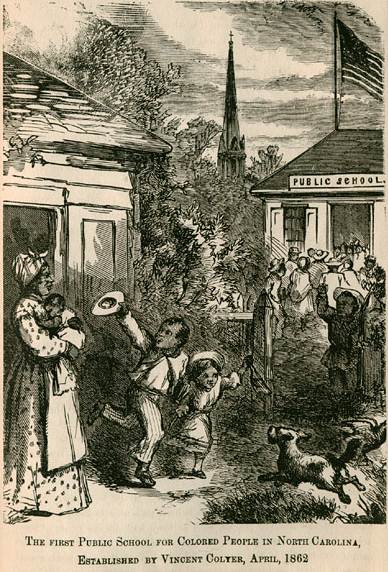
“…These schools are now to be closed, not by an officer of the army, under whose sanction they have been commenced, but by the necessity laid upon me by Governor Stanley, who has informed me that it is a criminal offense under the laws of North Carolina, to teach the blacks to read, which laws he has come from Washington to enforce.” (p.44) “….The old people dropped their heads upon their breasts and wept in silence; the young looked at each other with mute surprise and grief at this sudden termination of their bright hopes. It was a sad and impressive spectacle. Mr. Colyer himself could hardly conceal his emotion. A few moments of silence followed, when, as if by one impulse, the whole audience rose and sang with mournful cadence, ‘Praise God from whom all blessings flow,’ and then shook hands and departed.” (p.47)
Colyer met with Lincoln after Stanley’s appointment, and later Stanley acknowledged a “misunderstanding.” At the close of Colyer’s report, he was pleased to report that the schools eventually reopened and Stanley resigned that September. After the government allowed Black troops to fight in 1863, Colyer recruited and trained Blacks for the USCT (United States Colored Troops), and used men who came to his out-post as scouts and spies because of their knowledge of the area. One of the freed men that he educated through his schools and used as a scout, Furney Bryant, later enlisted in the 1st North Carolina Colored Regiment as a first sergeant. He wrote to Colyer from Jacksonville, Florida, on March 23, 1864:
In a few lines, I will inform you that I am in good health. I am happy in having the pleasure of writing to you while studying over all the care and affection which you have shown towards the colored people. I do say, and truly believe, that you will have your reward in Heaven….It was my desire to have called upon you again before I left New York, but the steamer left so hurriedly we could not….(p. 14)
The Report of Vincent Colyer,…On The Reception And Care Of The Soldiers Returning From The War (September 14, 1865, reprinted in 2008 by Pranava Press, New Delhi, India) includes his observations as State agent in charge of expending funds for welcoming back veterans, as reported to the Union League Club of New York. Colyer oversaw the Soldiers’ Depot on Mercer and Howard Streets in Manhattan which first opened by Legislative act in 1863 and was renewed in 1865. Soldiers, who presented furlough or discharge papers, were given meals, medical care, dormitory-style rooms, religious services, and transit information. The rule for soldiers was simply put, “All soldiers, while in this house, are the guests of the State and should be treated, and are expected to conduct themselves accordingly.” Colyer tried to protect the men from unscrupulous storekeepers, drunkenness, brothels and other vices of the city. Troops, both Black and white, ate and slept together, according to Colyer’s order and funds were raised for the destitute and distributed by the Ladies’ Auxiliaries. When the mourning period for President Lincoln ended, black draperies were collected by the Depot to be recycled into mourning clothes for widows. Monies were collected privately for fruits and vegetables to enhance soldiers’ meals because those fresh foods were not part of government-issued provisions. (His report indicated that $14,607.38 was collected for this purpose.)
When Colyer visited the men from the 13th New Hampshire on the Maine, a hospital boat, the men greeted the delivery with a round of cheers. A similar rousing welcome greeted the fresh rations as Colyer and women’s auxiliaries visited other ships and forts in the New York area serving over 3,000 soldiers a day. Bands and special treats welcomed regiments from New York and feted wounded veterans at Central Park Hospital. When Colyer addressed the returning New York soldiers he said, “…In the future the poet and the historian would record their victories, while they would be in the enjoyment of the best offices, the highest honors and emoluments to be bestowed by a grateful people. Those who were soldiers in the time of war could, in time of peace, maintain the constitution and the laws of the Republic….” (p.42) On August 31, 1865, his position was terminated and all records were turned over to Governor R. E. Fenton of New York.
After the Civil War, Colyer achieved fame for his artwork, especially his images of the American West. A member of the Indian Commission from 1868-1872, he traveled to Alaska in 1869, advocated education and medical services for the native peoples, and painted watercolor sketches of weather phenomena there. His watercolors of western forts, Native American villages and early settlements from New Mexico to Alaska created during his time with the Indian Commission are in many collections including the Beinecke Library at Yale, the Gilcrease Museum in Tulsa, Oklahoma, the Museum of Fine Arts in Boston, and the Albuquerque (New Mexico) Museum of Art. In the late 1860s, he relocated his studio to Contentment Island, Connecticut, and settled in Darien. Colyer died of malaria. In 1872, his wife drowned in Long Island Sound when her horse bolted from its buggy crossing the bridge to Contentment Island. Section 75, lot 10098.
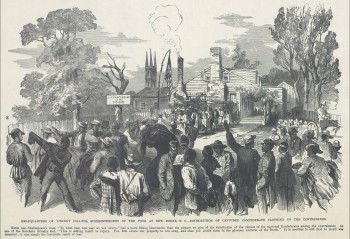
COMBES (or COMBS), EDWARD (or EDWIN) L. (1829-1904). Private, 56th Regiment, New York State National Guard, Company C. A New York native, he is listed as a cooper (barrel maker) in the 1857-1862 Brooklyn Directory; at that time, he lived at 65 East Baltic Street. His name appears as Edwin L. Combs on the NPS (National Park Service) website for Civil War soldiers. Combes served as a private with the 56th Regiment when it was activated from June 18 through July 4, 1863. He mustered out with his comrades.
The New York State census for 1865 reports that he was a cooper living in a frame house valued at $2,000 with his wife Charlotte and four children. He is listed as a cooper in the 1865 and 1867-1870 Brooklyn Directories; he was living at the same street address as he was in 1862. The 1880 census indicates that he was a retired cooper living in Brooklyn with his wife Elizabeth. He last lived at 220 Pacific Street in Brooklyn. His death was attributed to apoplexy. Section 100, lot 863, grave 4.
COMBS, AUGUSTUS BERNARD (1844-1919). Private, 13th New Jersey Infantry, Company A; 17th Veteran Reserve Corps, Company I. After Combs, who was born in New York, enlisted as a private on July 21, 1862, he mustered into the 13th New Jersey on August 25. On May 1, 1864, he transferred into Company I of the 17th Veteran Reserve Corps from which he mustered out on March 18, 1865. On March 23, 1865, he applied for an invalid pension that was granted under certificate 141,099.
Augustus B. Combs is listed in the New York City Directories for 1872 and 1876-1878 as having an eating house at 16 Fulton Market and living in Brooklyn. The Brooklyn Directory for 1894-1896 lists him as a collector; at that time, he lived at 346 Decatur Street. According to the 1880 census, he was employed as a salesman. The Veterans Schedule of 1890 confirms his military service and notes that he was wounded twice and discharged for disability. He was a member of Gouverneur K. Warren Post #286 of the Grand Army of the Republic. The censuses of 1900 and 1910 note that he worked as a collector for a newspaper; he lived at 317 Reid Avenue in Brooklyn at the time of the 1910 census, then moved to 8618 107th Street in Richmond Hill, Queens, his last address. Combs died at 357 Herald Avenue in Queens. He died from nephritis. Section 151, lot 16358.
COMBS (or COMBES, COOMBS), EDGAR (1842-1907). Corporal, 71st Regiment, New York State Militia, Companies E and K. Combs was a native of New York. After enlisting as a private at New York City in 1861, Combs mustered into Company E of the 71st Regiment, serving for three months. According to his obituary in the Brooklyn Daily Eagle, he fought at Bull Run, Virginia, and other battles under Major General George B. McClellan. He returned to the 71st in 1862 when it was part of the New York National Guard and served for three months as a corporal in Company K.
The census of 1870 indicates that Combs was employed as a clerk. He is listed as an agent in the Brooklyn Directory for 1880-1882. Active in military affairs, he belonged to the George Rickard Post #362 of the G.A.R. and the War Veterans’ and Sons’ Association. In addition, he was involved in Democratic Party politics in the Eighth Ward; at the time of his death, he had been president of a local association for eight years. In 1890, he applied for an invalid pension, certificate 597,369. A clerk in the office of the Brooklyn Fire Department for fifteen years, he died there at his post. His last residence was 34 Dodworth Street in Brooklyn. His death was attributed to heart disease. Shortly after his death in 1907, Maria Combs, who is interred with him, applied for and received a widow’s pension, certificate 627,171. In addition to his widow, he was survived by three daughters and a son. Section 112, lot 16614.
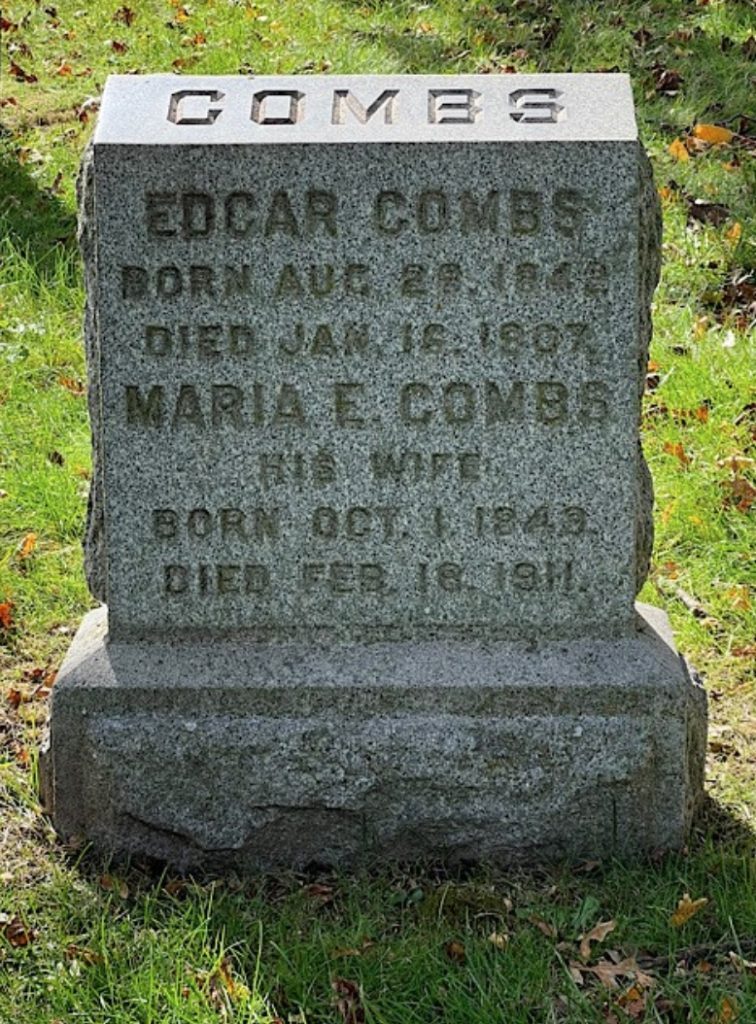
COMBS, ELIAS (1821-1866). Captain, 5th New York Heavy Artillery, Company B. A Brooklynite by birth and a merchant by trade, he was 5′ 3″ tall with grey hair, grey eyes and a light complexion at the time of his enlistment at New York City on January 4, 1862. According to an article in the New York Herald on January 19, 1862, Elias Combs, who had previously served in the Washington Greys, was recruiting at 231 Pearl Street for a unit that would be assigned to the coastal defense in forts along harbors. He mustered into the 5th New York on March 1, was commissioned as a captain on June 10 with rank from March 1, and was discharged on October 9. He last lived at 61 St. Felix Street, Brooklyn. Combs succumbed to sunstroke. Section 105, lot 3507.
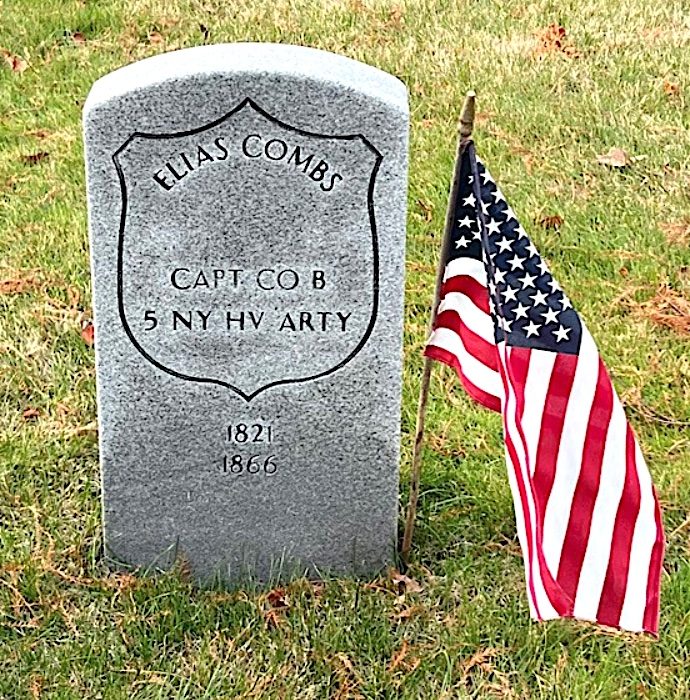
COMBS, SAMUEL D. (1844-1871). Second lieutenant, 84th Regiment, New York State National Guard, Company C. Born in New York State, Combs enlisted as a second lieutenant at New York City on July 12, 1864, and was commissioned into the 84th New York National Guard the next day. He mustered out of service after 100 days on October 29, 1864, at New York City. Combs last lived at 232 East 26th Street in Manhattan. His death was attributed to endocarditis. Section 112, lot 16614.
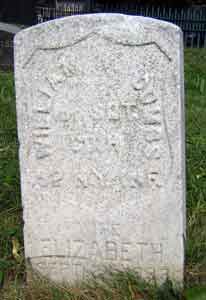
COMBS, WILLIAM H. (1841-1902). First sergeant, 52nd Regiment, New York State National Guard, Company H; private, 13th Regiment, New York State National Guard, Company H. A New Yorker by birth, he was employed as a butcher at the time he registered to serve. After enlisting at Brooklyn as a private on May 28, 1862, he mustered into the 13th that day and mustered out on September 12 of that year at Brooklyn. He served for 30 days the next year as a first sergeant in the 52nd New York National Guard.
According to the 1880 census, Combs was a newspaper dealer. The 1880-1882 Brooklyn Directory also lists him as being associated with paper; during those years, he lived at 551 Gates Avenue. The Brooklyn Directory of 1888-1890 indicates that he was a news agent. His military service was confirmed by the Veterans Schedule of 1890. Combs is identified as working with news in the 1890-1892 Brooklyn Directory; at that time, he lived at 474 Jefferson Avenue. He applied for and received an invalid pension in 1894, certificate 958,552. At the time of the census of 1900, he was not working and lived at 318 Dean Street in Brooklyn. His wife, Elizabeth B. Combs, applied for and received a widow’s pension in 1908, certificate number 554,315. Section 136, lot 28070.
COMES (or COMBES), DANIEL DRAKE (1843-1916). Private, 22nd Regiment, New York State National Guard, Companies B and A. Texas-born Comes enlisted at New York City as a private on May 28, 1862, served for three months with Company B of the 22nd Regiment, and mustered out at New York City on September 5. A year later, he returned to Company A of the 22nd Regiment for 30 days in 1863, when his unit was activated from June 18 to July 24.
In civilian life, Comes was employed in the stationery business and then, for 20 years, was a clerk in the Department of Water Supply, Gas and Electric. The Brooklyn Directory for 1876-1878 lists him as a stationer at 8 Cortlandt Street and living in New Jersey. When he was a stationer, he published a score-book for athletics, starting at 25¢, according to an advertisement in the New York Clipper on August 7, 1880. The Phillips’ Business Directory for 1880-1882 lists him as a stationer at 183 Broadway in Manhattan. In 1890, he applied for an invalid pension and received one under certificate 853,532. As per the New York City Directory for 1891-1892, he was still working as a stationer at the same Broadway address.
The Brooklyn Standard Union reported on December 13, 1909 that Comes was among 200 members of the Brooklyn Masonic Veterans who attended the 21st annual banquet held at the Grant Post Hall at 489 Washington Avenue in Brooklyn; many speeches followed the dinner and the event was headlined as a “Feast of Wisdom and Flow of Soul.” According to his obituary in The New York Times, he was a member of the Freemasons, the Ulysses S. Grant Post #327 of the G.A.R., and the Veterans Corps of the 22nd Regiment where he was a captain in 1881. As per an announcement of his death in the Brooklyn Daily Eagle, members of the Grant Post of the G.A.R. were invited to attend his funeral. His last residence was 500 Hancock Street in Brooklyn. His death was attributed to arteriosclerosis. Augusta Hammond Comes, who is interred with him, applied for and received a widow’s pension in 1916, certificate 808,511. Section 60, lot 1034, graves 2-3.
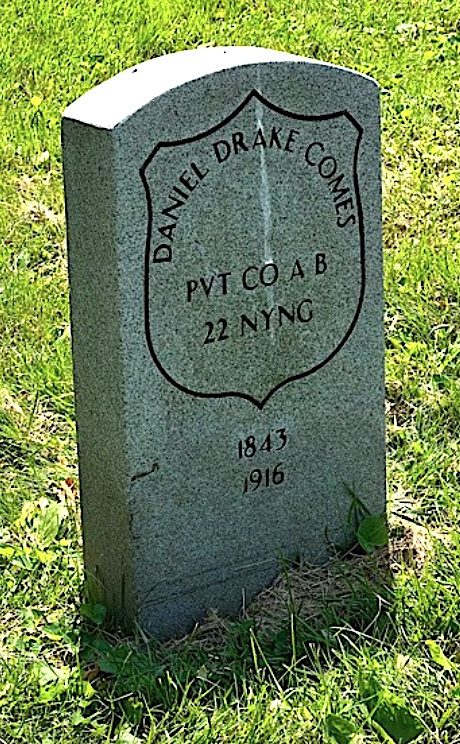
CONANT, CHARLES H. (1835-1888). Captain, Maine Coast Guard Infantry, Company F; sergeant, 4th Maine Infantry. Conant, a resident of Rockland, Maine, a ship-building center, was employed as a caulker according to the 1860 census. He enlisted on June 15, 1861, and mustered into the 4th Maine. At some point, he was commissioned as a second lieutenant and then first lieutenant before he was commissioned into the Maine Coast Guard Infantry as a captain on January 7, 1865. Company F, stationed at Belfast, Maine, was one of seven Maine infantry companies totaling over 800 men that were part of the coastal defense during the Civil War. He mustered out on July 7, 1865, at Augusta, Maine.
In 1870 and 1880, Conant was living in Brooklyn and employed as a caulker as noted by the censuses. He applied for and received an invalid pension in 1883, certificate 411,071. He last lived at 294 18th Street in Brooklyn. The cause of his death was tuberculosis. His wife, Carrie Conant, applied for and received a widow’s pension in 1888, application 377,397, certificate 254,573. Section 3, lot 18372, grave 224.
CONANT, SIMON TUTTLE (1837-1912). Private, 11th Massachusetts Infantry, Company F. A native of Acton, Massachusetts, Conant resided in Boston and was a painter by trade when he enlisted on June 13, 1861, and mustered that day into Company F of the 11th Massachusetts. Standing 5′ 6″ tall, he had blue eyes, light hair and a light complexion. He was discharged for disability on December 24, 1862, caused by rheumatism of the spine sustained while in service and side-lining him the last 60 days of his military duty.
As per Conant’s soldier records from Massachusetts, he married in Norwich, Connecticut, on March 7, 1865. According to the census of 1870, Conant was a painter who lived in Jersey City, New Jersey. (That census indicates that he was born in England, but other records show his birthplace in Massachusetts.) After residing in Jersey City for eleven years, he moved to Brooklyn in about 1878, then to the Boston area where he was a member of Charles H. Stevens Post #53 of the Grand Army of the Republic in Leominster, Massachusetts. He successfully applied for an invalid pension in 1884, certificate 1,101,188. In 1904, he applied for and received an increase in his pension from $10 to $12 a month citing that disability prevented him from performing manual labor. His last residence was at 12 Prescott Street in Leominster, the same address recorded on his application for the aforementioned pension increase. His cause of death was recorded as “old age with gradual inability of organs.” Section 136, lot 28307, grave 698.
CONDIT, WILLIAM HARRY (1838-1873). Private, 13th Regiment, New York State Militia, Company G. Born in New York City, Condit served with the 13th New York State Militia for three months in 1861. He may be the William H. Condit who is listed in the Brooklyn Directory for 1864 as being in the tea business; a William H. Condit is also listed as a clerk in the 1867-1870 Brooklyn Directory. According to his passport application of 1869, he was 5′ 10″ tall with grey eyes, auburn hair, a straight nose, round face and a high forehead. A world traveler, he was in Hong Kong and Shanghai, China, before he last lived in Italy and died there in Florence. The cause of his death was dysentery. Section F, lot 18553.
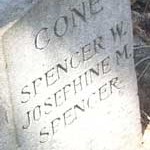
CONE, SPENCER WALLACE (1819-1888). Colonel, 61st New York Infantry; captain, Commissary of Subsistence, New York State National Guard. Cone was born in Alexandria, Virginia. His father, Spencer Houghton Cone, an influential Baptist minister, was Chaplain of the United States House of Representatives from December 7, 1815-December 5, 1816. Spencer Wallace Cone attended New York University. On October 9, 1843, he married Josephine Martinez. A man of letters, among his writings are The Proud Ladye and other Poems (1840) and The Fairies in America (1859). With his brother, Edward Winfield Cone, Spencer Cone wrote two memoirs of their father, Some Account of the Life of Spencer Houghton Cone: Preacher in America (1856) and The Life of Spencer H. Cone (1857). Prior to the publication of those memoirs, the brothers posted an ad in the Penfield [Georgia] Christian Index in October 1855 asking for recollections, letters and documents that might be helpful in writing that remembrance; all materials that were forwarded to 465 Broome Street in New York would be carefully handled and returned, if asked.
During the Civil War, Cone enlisted as colonel of the 61st New York Infantry in October 1861, but was discharged six months later because his “management of the business and economy of his regiment is not as it should be, nor do his officers have confidence in his general capacity….” He was then assigned as Captain of the Commissary of Subsistence, on the Staff of Brigadier General William Hall with the New York State National Guard. In his field report for June 15-July 18, 1863, Hall noted that Cone’s experience and skill in military affairs deserve acknowledgments…” In addition, he wrote the lyrics to “Charge Bayonets” for the Army Marching Chorus in 1862.
Cone, a lawyer, journalist and poet, resided in New York City after the War. He was an occasional actor and was the father of the actress Kate Claxton (born Kate Eliza Cone), who was starring in the “Two Orphans” at the Brooklyn Theatre in 1876 when it burnt down. He last lived in Larchmont, New York. His death was attributed to heart disease. In addition to his daughter, he was survived by his wife and a son. His papers are held in the archives of the Zack S. Henderson Library Special Collections, Georgia Southern University in Statesboro, Georgia; that archive also includes letters and sermons by his father. Section 171, lot 11581.

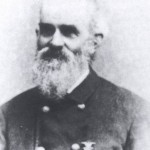
CONK, ANTHONY (1822-1894). Colonel, 139th New York Infantry. Conk was born in New Jersey. He is listed as a carpenter in the Brooklyn Directories for 1858 and 1862. During the Civil War, he organized and led the 139th New York Volunteers, which a local newspaper called “one of the most distinctively Brooklyn regiments.” Posters seeking recruits for the regiment, known familiarly as the Senatorial Regiment, offered new recruits a bounty of $225, of which $150 was payable before leaving the State and $75 upon discharge; good quarters and rations were also promised. As per his muster roll, he was a carpenter by trade who was 5′ 10½” with dark brown hair and gray eyes. He enlisted at Brooklyn on July 28, 1862, served with the 139th until July 29, 1863, when he resigned on account of pressing personal business. The Brooklyn Directory for 1863 lists him as a builder.
After the war, Conk returned to carpentry part-time and was active in local Democratic politics. The Brooklyn Directory for 1866 lists him as a builder. He is identified as a carpenter in the Brooklyn Directories for 1867-1870, 1870-1873 and 1873-1876. He applied for and was granted an invalid pension in 1886 citing that he contracted chronic diarrhea, malaria and rheumatism in the line of duty. Frederick E. Stevens, a clerk in the Supreme Court of Kings County, who served with Conk and was a hospital steward in the 139th, confirmed that the colonel was confined to a tent at Camp Hamilton for three months dating from October 1862 because of the debilitating illnesses. His application was granted under certificate 347,087.
The Brooklyn Directory for 1891-1892 reports that was a carpenter living at 176 Ryerson Street, his last address. He joined the George C. Strong Post #534 of the Grand Army of the Republic, whose members attended his funeral on August 12, 1894. His death was attributed to apoplexy. He was survived by his wife and one son; another son died at age twenty-five in 1889. In 1894, Annie (Anna) Riddle Conk applied for and received a widow’s pension, certificate 408,031. Section 84, lot 9995.
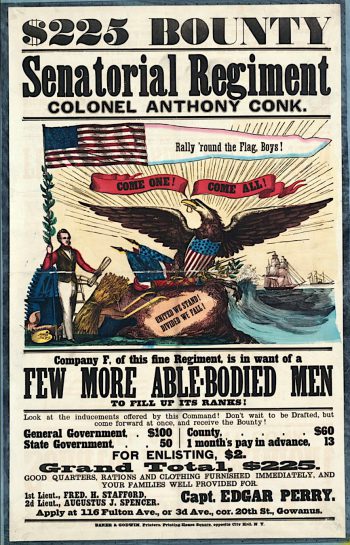
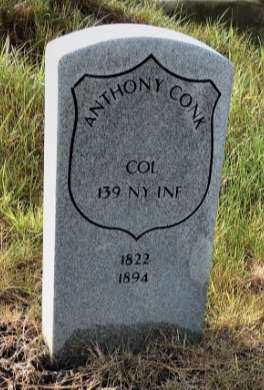
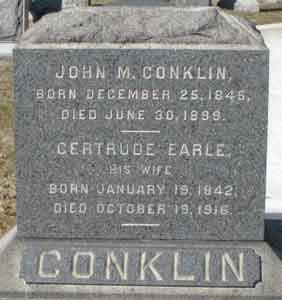
CONKLIN, JOHN M. (1845-1899). Corporal, 139th New York Infantry, Company C. A New Yorker by birth, Conklin enlisted as a private at Brooklyn on August 21, 1862, and mustered into the 139th New York on September 9. He was promoted to corporal on about October 1, 1864, and mustered out on May 15, 1865, at David’s Island, New York Harbor.
Conklin is identified as being in the dry goods business at 144 Atlantic Avenue in the 1867-1870 Brooklyn Directory; during those years, he lived at 377 State Street. The 1870 census identifies him as a dry goods dealer. On February 1, 1899, he opened a large dry goods store, John M. Conklin & Son, with an extensive inventory of women’s hats and clothing, at 486 Fulton Street in downtown Brooklyn. An article about the opening of the establishment appeared in the Sag-Harbor Express, where he was a frequent visitor for 30 years.Conklin died from tuberculosis. He last lived at 219 Berkley Place in Brooklyn.
Conklin’s remains were moved to their current location on October 29, 1899, four months after the initial interment in lot 8840. And, by December 24, 1899, the new store was in bankruptcy, as reported by articles in The New York Times and the Brooklyn Daily Eagle. Gertrude Conklin, applied for a widow’s pension in 1905, application 838,112, but no certificate number is listed. Section 195, lot 30336.
CONKLING, FREDERICK AUGUSTUS (1816-1891). Colonel, 84th Regiment, New York State National Guard. Conkling was born in Canajoharie, New York. His father was Alfred Conkling, a New York Congressman and judge who served as the United States minister to Mexico for one year. Frederick was educated at the Albany Academy, where he pursued classical studies, then began his career in the mercantile profession and became a member of the dry goods company, Conkling and Churchill, in New York City. In 1848, he married Eleanora Lorillard Ronalds; the couple had six children.
Conkling won election as a Republican to the New York State Assembly three times in 1854, 1859 and 1860. He was a representative in the United States Congress from 1861-63, was chair of the Ways and Means Committee, then lost his bid for re-election. He organized the 84th National Guard in Brooklyn, enlisting as its colonel on July 3, 1863, serving in the Shenandoah Campaign, mustering out with the regiment on August 4, 1863, then re-enlisting on July 13, 1864, again as colonel. He mustered out with his unit on October 29, 1864, at New York City.
After the war, Conkling was an unsuccessful Republican candidate for mayor of New York in 1868. He subsequently changed his politics to be a Liberal Republican and then, a Democrat. His brother, Roscoe Conkling, served in the United States House and Senate. Frederick Conkling was a founder and president of the West Side Savings Bank of New York and president of the Aetna Fire Insurance Company of Hartford, Connecticut, until its dissolution in 1880. He served as a member or trustee of numerous organizations in New York and wrote many pamphlets on political, commercial and scientific subjects. He lived at 27 East 10th Street in Manhattan. His cause of death was senility. A widower, his wife died in 1879; three of their children survived him. Section 152, lot 17959.
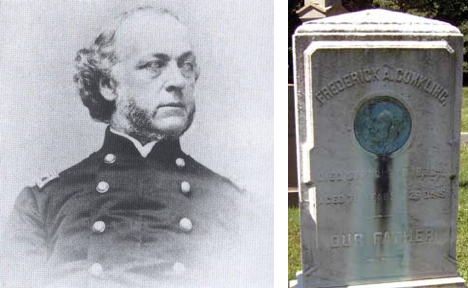

CONLIN, BENJAMIN FRANKLIN (1843-1911). Captain by brevet; captain, 155th New York Infantry, Companies H and F; private, 8th Regiment, New York State Militia, Company E. Born in the 13th Ward of Manhattan and a compositor by trade, Conlin was 5′ 8″ tall with hazel eyes, dark hair and a dark complexion when he entered service. He enlisted as a private at New York City on April 23, 1861, mustered into the 8th New York State Militia, and mustered out on August 2, 1861. After re-enlisting at New York City as a quartermaster sergeant on September 13, 1862, he mustered into the 155th Infantry’s Field and Staff on November 18, 1862. During his service, he was on furlough in October 1863, returned to the muster rolls that December, was promoted to second lieutenant on January 8, 1864, effective upon his transfer to Company H three days later, and then promoted to first lieutenant on April 13, 1864, effective upon his transfer to Company F on June 6, 1864. He was brevetted to captain for “gallant and distinguished service at the Battle of Boydton Plank Road, Virginia.” He was promoted to captain on November 17, 1864, effective upon his transfer back to Company H on December 20, and was discharged on June 27, 1865.
Conlin’s soldier records show that he engaged in many Virginia battles including First Bull Run; Suffolk (January 30, 1863); Spotsylvania Court House (May 18, 1864); North Anna (May 23-26, 1864); Totopotomoy Creek (May 28-30, 1864); Cold Harbor (May 31-June 12, 1864); Petersburg where he was slightly wounded (June 16, 1864); Deep Bottom (July 28, 1864); Petersburg (July 30, 1864); Deep Bottom (August 25, 1864); Reem’s Station (August 28, 1864); and Boydton Plank Road (November 27, 1864). He was captured at Boydton Plank Road; upon his release he gave important information to Major General Winfield Scott Hancock that led to the freeing of 10 Union soldiers and the capture of the battle flag of the 25th North Carolina Regiment, 150 Confederates, and three guns.
In civilian life, Conlin worked for the Post Office for 42 years and was appointed to take charge of the Van Brunt Station in 1884, reporting to work until just before he died. In 1880, his application for an invalid pension was approved, certificate 279,720. A past commander of the Thatford Post #3 of the G.A.R., he also was a member of the Ulysses S. Grant Post #327. He was the grand marshal of the Memorial Day Parade in 1908.
According to his obituaries in the Brooklyn Daily Eagle and the New York Tribune, three of his brothers were well known. His eldest brother, Peter was a mounted policeman and police captain in New York City. Another brother, whose stage name was William Florence (and who also is interred at Green-Wood), achieved great fame in the theater. The New York Tribune reports that Benjamin had many souvenirs and books that belonged to “Billy” Florence. And his brother, Edwin Conlin, a commander of the Washington Grays, served in the Civil War. He last lived at 395 Seventh Avenue in Brooklyn having called South Brooklyn home for 43 years. His obituary in the New York Tribune attributes his death to acute gastritis.
Conlin’s funeral was held at the Grant Headquarters of the G.A.R. at 489 Washington Avenue. A death notice in the Brooklyn Daily Eagle from the Grant Post, which noted his service in the 155th New York, invited members of the Thatford Post to attend Conlin’s funeral; members were asked to attend in full uniform, officers with side arms. In addition to his wife, he was survived by two sons and two daughters. In 1911, Alicia Conlin applied for and received a widow’s pension, certificate 719,588. Section 156, lot 21473.
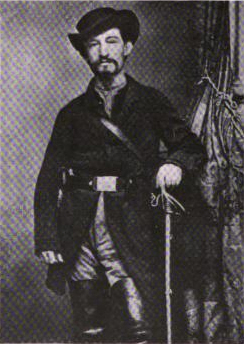
CONLIN, PETER (1841-1905). First lieutenant, 14th New York Cavalry, Company L; second lieutenant, 69th New York Infantry, Company E; private, 12th Regiment, New York State Militia, Company G. Born on the Lower East Side of Manhattan on Delancey Street, he was the older brother of Benjamin (see). He graduated from P.S. 34 in New York City. According to an article about him in The New York Times on May 16, 1897, his two interests as a young man were the military and acting. Pursuant to those dreams, he joined the Tompkins Blues, an independent military group, and was an aide to his brother, an actor who is also buried at Green-Wood and who had the stage name of William Florence.
At the onset of the Civil War. Conlin enlisted as a private on April 21, 1861, served with the 12th Regiment, and mustered out on August 5. He then re-enlisted as a second lieutenant on September 28, 1861, and was commissioned into the 69th New York. After participating in many Virginia battles included Fair Oaks, Gaines’s Mills, White Oak Swamp, Frazier’s Farm, and Malvern Hill, he resigned due to disability on September 6, 1862, after being hospitalized at Harrison’s Landing, Virginia, since July of that year. After recuperating, he returned to military service the next year and re-enlisted at New York City as a first lieutenant on May 8, 1863, was commissioned into the 14th New York Cavalry, and resigned February 26, 1864.
After mustering out, he was appointed Deputy Collector of Internal Revenue for the Second Louisiana District and then opened a hotel in Newburgh, New York, before he returned to New York City. Conlin joined the Police Department of New York City in 1869 and served for many years as a sergeant at City Hall. The New York City Directories for 1875-1876 and 1876-1878 list him as associated with the police at City Hall. As per his biography on the website, The History of Policing in the City of New York (not affiliated with the NYC Police Department), which confirms his Civil War service, he earned $1,600 in 1881. Conlin became a captain in 1884 and the following year became commanding officer of the Highbridge Precinct in the Third Inspection District under Inspector George W. Dilks (see). He is identified with the police and listed as having a home in Highbridge in the 1885-1886 New York City Directory. Although his promotion was challenged in 1887, that challenge was dismissed. He is listed in the 1891-1892 New York City Directory as working with the police; during those years, he lived at 216 East 118th Street.
Conlin, who had the rank of inspector, became police chief in 1895. Prior to that appointment, Mayor William Strong was motivated to reorganize the Police Department after the Lexow Committee of the New York State Assembly revealed corruption, inefficiency and incompetence. One of the mayor’s first moves was to convince Theodore Roosevelt, a Civil Service Commissioner in Washington, D.C., to resign from that post and assume a position on the four-man Board of Police Commissioners. Roosevelt saw an opportunity to institute Progressive reforms and began his new post on May 6, 1895. Roosevelt, who became president of the commission, quickly moved to close down police-run poor houses, cashier corrupt officers and force the Police Chief Thomas F. Byrnes into early retirement. He then promoted Conlin to acting chief.
The aforementioned online biography of Conlin notes that in 1895 the Brooklyn Daily Eagle reported that Conlin “kept himself free from the smirch of contamination and no one was able to point to aught that he had done which was not manly, honest, and straightforward.” Among Conlin’s concerns was that police officers always displayed discipline in the precinct and told the New York Herald, “I have drawn up a code of rules which I expect will be strictly enforced hereafter in every station house in the city.”
The New York Times reported on July 12, 1896 that Conlin’s appearance had changed quite a bit from his photographs as a Civil War soldier (pictured in this bio). That article states that the aforementioned picture shows him after he swung from his horse after living in the saddle for months. The Times notes that his boots, which fit his small feet, were his proud possession. Now in a natty uniform, he was described as “a keen, handsome little man with a becoming gray moustache and is polite and painstaking with just a trace of the soldier in his bearing.”
In an article in the New York Evening Post on August 13, 1896, it was reported that there was a problem at Madison Square Garden when William Jennings Bryan, as a Presidential candidate appeared and there was only one entrance. Several people with passes had difficulty getting through the police line; crowds numbered in the thousands on a very torrid night. Conlin, who promised to investigate the incident was praised by William P. St. John, treasurer of the Democratic National Committee and National Silver Party, for the excellent order preserved by the police without serious injury. St. John presented Conlin with autographs of Mr. and Mrs. Bryan and Arthur Sewall, the Vice-Presidential candidate. One of Conlin’s last duties in the Police Department was to make sure that all aspects of the transition to the consolidated Greater New York as of January 1, 1898, regarding the police were in place. He retired in August 1897 with a pension of $3,000 per year.
Active in many organizations, he was a Freemason, and belonged to the Royal Arcanum, the Society of the Potomac, the Veteran Corps of the 69th Regiment, of which he was elected president in 1897, and was a charter member the Lafayette Post #140 of the G.A.R. In 1898, he moved to center Moriches, Long Island, where he had a summer cottage. He died suddenly at the home of one of his daughters in Walpole, Massachusetts, where he lived after the death of his wife, which had occurred a year before his demise. His death was attributed to heart disease. He was survived by two other daughters. Section 197, lot 27428, grave 15.

CONNELLY, SAMUEL J. (1842-1888). Private, 13th Regiment, New York State National Guard, Company D. A New Yorker by birth and a clerk according to the 1860 census, Connelly was elected to the Fire Department in 1861. He enlisted at Brooklyn on May 28, 1862, mustered immediately into the 13th Regiment, and mustered out after three months on September 12 at Brooklyn. The census of 1870 indicates that he was employed as a cotton agent. A notice in the Brooklyn Daily Eagle of December 12, 1873, states that he was appointed temporary clerk to Registrar Watt at a salary of $100 a month. As per the 1880 census, he was working as a clerk. His last residence was 291 Court Street in Brooklyn. He died from tuberculosis. Section 63, lot 24306.
CONNOR, JR., CLEVELAND A. (1839-1872). Second lieutenant, 8th Regiment, New York State National Guard, Company D. A native New Yorker, Connor was the brother of the Ezra S. Connor who was born in 1843 (see). A clerk according to the census of 1860, he enlisted at New York City on April 23, 1861, as a private. Two days later, he mustered into the 8th Militia, and mustered out at New York City on August 2, 1861. On May 29, 1862, he mustered into the same company and regiment, now part of the National Guard, as a sergeant. He was promoted to second lieutenant on July 11, 1862, and mustered out on September 10 of that year at New York City. The 1870 census lists his profession as policeman but according to an article in The Evening Post on June 19, 1871, he was dismissed from the force for failing to properly patrol his area in the 23rd Precinct while on duty. A Freemason, he last resided at 82 Christopher Street in Manhattan. He died from meningitis. Section 69, lot 1267.
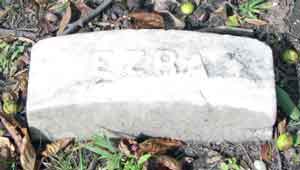
CONNOR, EZRA SAYER (1841-1866). Corporal, 8th Regiment, New York State National Guard, Company D. Born in New York State, he was a first cousin of Ezra Sayer Connor (see), both bearing the name of their maternal grandfather. He enlisted at New York City as a corporal on May 29, 1862, and mustered into the 8th Regiment on that date. He was discharged three months later on September 10 at New York City. His last residence was at the 5th Avenue Hotel in Manhattan. Section 69, lot 1267.
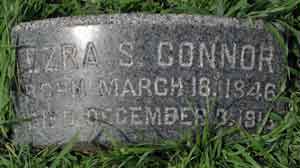
CONNOR, EZRA SAYER (1846-1918). Sergeant, 22nd Regiment, New York State National Guard, Company E. A native New Yorker, he was a brother of Cleveland (see) and a first cousin of Ezra Sayer Connor (see), both bearing the name of their maternal grandfather. A broker clerk by occupation, he enlisted at New York City as a private on May 28, 1862, was furloughed on June 12, and returned seven days later. In 1863, he served in the same unit and company for 30 days with the rank of sergeant.
Connor became a member of the Stock Exchange in 1864. The Brooklyn Directory for 1884-1886 lists him as a broker; during those years, he lived at 317 State Street. As per an ad listed under “Copartnerships,” in the New York Evening Post, he joined his brother to form W. E. Connor & Co. on December 31, 1885. That firm, at 71 Broadway, engaged as stock brokers and bankers.
According to the census of 1900, he was a broker by trade. In 1906, his application for an invalid pension was granted, certificate 1,128,349. The stock exchange firm, Connor & Co., at 31 Nassau Street in Manhattan, which he headed with his brother, Washington E. Connor, failed in 1912. According to Washington Connor, the collapse of the enterprise was due to Ezra’s mental breakdown, a decline noticed for several months. Washington Connor, a friend of the magnate Jay Gould, lost his summer home and property to foreclosure in March 1913. Ezra Connor last lived at 15 Columbia Avenue in Arlington, New Jersey. His cause of death was chronic nephritis. Section 154, lot 23711, grave 6.
CONNOR, GEORGE A. (1825-1904). Bandmaster, 84th New York (14th Brooklyn) Infantry. Connor, who was originally from Maine, was a veteran of the Mexican War serving with the 2nd Artillery from July 1846 through October 1850. He was 5′ 9″ tall with blue eyes, light hair and a fair complexion. According to the 186o census, he was the father of William (see) and a professor of music, although his draft record states that he was a minstrel. (Minstrel shows featured white performers of “blackness” in exaggerated costumes and blackface make-up, supposedly for comedic effect, but relying on racist derision and stereotyping at its core. The shows were popular from the mid-19th century well into the 20th century.) After enlisting at Brooklyn as a musician on October 1, 1861, he mustered into the 14th on October 24. At some point, he became the bandmaster. He was discharged on August 17, 1862, at Camp Halstead, Virginia. He is listed as a musician in the 1862 New York City Directory.
The census of 1880 indicates that Connor was employed as a musician. An article in the Brooklyn Daily Eagle (January 8, 1884) noted that veterans of the Mexican War, among them George Connor, met and hoped to formally organize to get benefits for their military service citing neglect vis-à-vis members of the G.A.R. Connor was also mentioned in an article in The New York Times (June 19, 1886) when his musical ensemble, the Eighth Regiment Band, played on board the steamer Pomona that set sail in the Hudson River to Excelsior Grove near Yonkers, New York, for an outing for veteran soldiers and sailors. On October 18, 1892, he mustered into the Clarence D. McKenzie G.A.R. Post #399. An advertisement that cited his membership in the McKenzie Post noted that he had re-organized the Eighth Regiment Band into the Fourteenth Regiment Veterans’ Military Band and Orchestra and was willing to provide music for all occasions. In 1892, his application for an invalid pension was granted, certificate 943,391; he also had a pension from his service in the Mexican War, certificate 13,073. As per the census of 1900, he was working as a music teacher. He last lived at 88 Pacific Street in Brooklyn. His wife, Harriet Connor who is interred with him, applied for a widow’s pension in 1904, application 507,327, but no certification number is given. Section 136, lot 28070, grave 305.
CONNOR, WILLIAM E. (1848-1894). Musician, 84th New York (14th Brooklyn) Infantry, Band. Connor was born at Fortress Monroe on December 17, 1848, and moved to New York City as a youngster. Shy of age 13, he enlisted at Brooklyn on October 1, 1861, mustered into the 14th’s band on October 24 (George A. Connor (see), his father, was the bandmaster), and was discharged from service on August 17, 1862, at Camp Halstead, Virginia. He served for 14 years with the 8th National Guard’s band.
In civilian life, he was in the plumbing business and had many contacts with boxers and boxing. He is listed as a plumber in the 1880-1882 Brooklyn Directory; during those years, he lived at 139 Court Street. In 1891, Connor applied for an invalid pension which was granted, certificate 833,576. His wife, Ella Connor, applied for and received a widow’s pension shortly after his death in 1894, certificate 443,630. In 1895, his child received a minor’s pension, certificate 424,532. Section 126, lot 2458, grave 838.
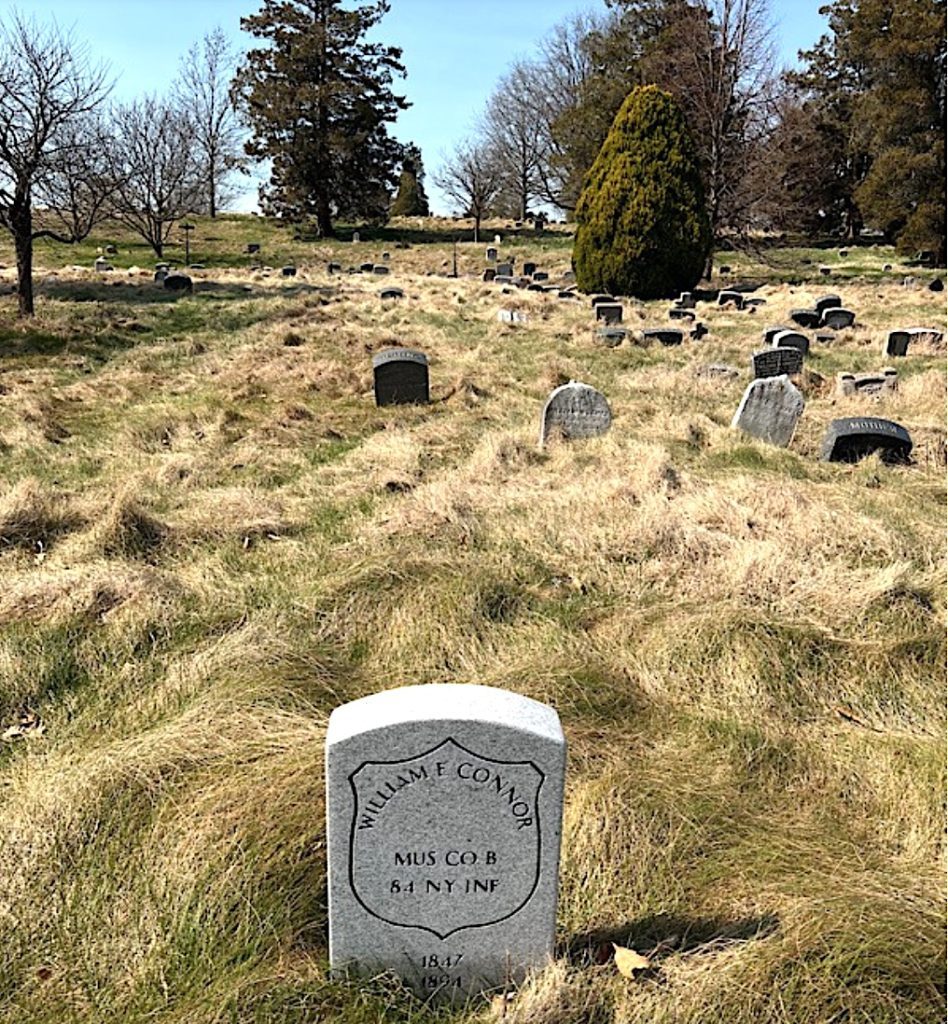
CONRAD, WILLIAM H. (1836-1863). Private, 2nd New Jersey Cavalry, Company L. Enlisting as a private on August 22, 1863, Conrad mustered into the 2nd New Jersey four days later. He died of typhus fever on October 7, 1863, at Philadelphia, Pennsylvania. Section 59, lot 1877, grave 136.
CONROW, THEODORE (1844-1925). Private, 12th Regiment, New York State National Guard, Company A. A New York City native, he was the brother of William Conrow (see). He was educated in the public schools before entering the firm of Thompson, White & Company, hatters. As per his biography in the New York Society of Sons of the Revolution, of which he was a member, he left the hat business in 1860 and joined the firm of Demas Barnes & Company until 1863, then was associated with J. B. Ayres & Company, paper dealers.
During the Civil War, he served with the 12th Regiment during its 30 day activation in 1863. At that time, the 12th Regiment was called to Pennsylvania during the southern invasion that culminated in the Battle of Gettysburg and then returned to New York City during the Draft Riots there in July 1863. His biographical sketch notes that he then served with Company A of the 23rd Regiment.
Conrow remained in the paper business, and, after Ayres death, the establishment was known as Conrow Brothers, with Theodore Conrow as the senior partner. In 1873, he married Hettie Jeanette Stilwell (Stillwell), the daughter of a prominent Brooklyn family; the couple had two daughters. The New York City Directories for 1876-1878 and 1882-1883 and the Brooklyn Directory for 1884-1886 list him as being in the paper business at 33 Beekman Street; at the time of the latter directory, he lived at 215 St. John’s Place. He mustered into the Lafayette Post #140 of the G.A.R. on March 1, 1895; he noted in that post’s sketchbook that he was a merchant living in Brooklyn. In addition, he was a member of the Montauk Club and the Brooklyn and New York Chambers of Commerce.
On November 15, 1925, the New York Tribune, The New York Times and the New York Sun reported that Conrow was among those selected as a member of Mayor John P. Mitchel’s Committee of One Thousand on National Defense to assist President Woodrow Wilson in obtaining national defense legislation from Congress; similar committees representing prominent men from all walks of life were established in 50-60 other American cities. His obituary in The New York Times, which notes his work in the paper industry for sixty years, indicates that he was one of the first members of the Board of Trustees of the Berkeley Institute. His obituary in the Brooklyn Standard Union confirmed his Civil War service and civic affiliations.
At the time of his death, he was a widower who lived at 53 Montgomery Place in Brooklyn. He died from angina pectoris. He was survived by two married daughters. As per an announcement in The New York Times on January 27, 1925, he left an estate in excess of $5,000 in both real estate and property; that estate went to his two daughters. Section 165, lot 29204.
CONROW, WILLIAM EDWARD (1840-1902). Corporal, 12th Regiment, New York State National Guard, Company A. A Brooklyn native and the brother of Theodore Conrow (see), his mother was of Dutch Holland lineage and his father was of Quaker descent. During the Civil War, Conrow served as a corporal in Company A of the 12th Regiment for 30 days in 1863.
A wholesale paper dealer since 1864, he opened his own business with his brother in 1882 on Beekman Street in Manhattan that bore the name Conrow Brothers. He is listed in the paper business in the New York City Directories for 1876, 1877 and 1882-1883 when he lived in New Jersey and in the Brooklyn Directory for 1884-1886 when he lived at 213 Berkeley Place. The Veterans Schedule of 1890 confirms his military status.
According to obituaries in the New-York Daily Tribune and the Brooklyn Daily Eagle, Conrow belonged to the G.A.R.’s Lafayette Post #140, the Chamber of Commerce, the Sons of the American Revolution and the Society of Old Brooklynites. In addition, he was a member of the Montauk Club and the Memorial Presbyterian Church. He last lived in at 213 Berkeley Place in Brooklyn. His death was attributed to angina. He was survived by his wife, a son and two daughters. Section 165, lot 29203.
CONSTABLE, ARCHIBALD G. (1818-1882). Captain, 11th Ohio Light Artillery. Born in London, England, his father Archibald Constable, of Edinburgh, Scotland, was the first publisher of Sir Walter Scott’s works; later in his life, the son would tell anecdotes about his meetings with Scott as a youngster. As per his obituaries in the Brooklyn Daily Eagle and The New York Times, Archibald G. Constable studied at the University of Glasgow, then entered the military service of the East India Company. He left for India at age 17 and served in the Bengal Artillery for over sixteen years, earning numerous medals and testimonials to his bravery, efficiency and fidelity as a soldier. He returned to England and Scotland, then came to the United States in the early 1850s and settled in Cincinnati, Ohio, at the onset of the Civil War. An advocate of emancipation, he joined the Union Army.
Accounts of Constable’s service during the Civil War are subject to interpretation. As per his soldier record, he enlisted as a captain on August 10, 1861, mustered into the 11th Ohio Light Artillery on October 27, and resigned on December 13, 1861. However, his obituaries in the Brooklyn Daily Eagle and The New York Times paint a more elaborate picture of his Civil War service commensurate with his larger-than-life personality. The obituaries note that Constable was appointed a Major of Artillery and was at one time, connected officially with General Schenck’s Department at Baltimore. Both obituaries note that during his association with an Ohio regiment, he gave future President Rutherford B. Hayes lessons in military drill and prepared him for active duty on the battlefield. The Brooklyn Daily Eagle obituary goes on to report that Constable served under Commander Foote of the Navy, on the Mississippi River, and, at the close of the War, was assigned to Baltimore, Maryland, where he was the provost marshal. Both obituaries report that he declined promotions to colonel and major-general which he was offered before the end of the hostilities.
Constable remained in Baltimore, working as a journalist, then relocated to New York City to practice that profession, holding the position of confidential clerk at the publishing house of Harper & Brothers. In 1869, he was living at 158 South Oxford Street in Brooklyn. His India connection was the subject of an anecdote repeated in his obituary. In 1872, a Parsee man from Bombay (Mumbai) had a psychotic episode during a performance at Niblo’s Garden (a theater at the corner of Broadway and Prince Streets) and was taken to Blackwell’s Island for treatment. Constable read about the event and befriended the man who had, among his personal belongings, $100,000 in gold packed in small boxes. Constable was appointed the man’s custodian and in 1874, under a court order, the Parsee merchant was sent back to India accompanied by Constable.
An imposing man who was over six feet three inches tall with a large, fit physique, Constable was an expert in archery, lawn-tennis, and fishing. Well-known in many social circles, he belonged to the Jefferson Club (serving as its president in 1880), the National Archery Association (where he also held the presidency), the Long Island Rod and Gun Club, the Sons of St. George, the Oxford Club and the Freemasons. A writer, his work on Afghanistan was published by Harper & Brothers shortly before his death. He also presented lectures on India at the New-York Historical Society. The obituaries note that he was known for his high intellect, wit, vivacious personality and warm-heartedness. Constable last lived at 10 Lefferts Place in Brooklyn. His funeral took place at St. Luke’s Protestant Episcopal Church on Clinton Avenue in Brooklyn; resolutions of condolence were passed at a meeting at Harper & Brothers. His death was attributed to pneumonia, although his obituaries state that he died from liver troubles ostensibly contracted during his time in India. His remains were moved to the current location on June 19, 1883. Section 202, lot 24303 .
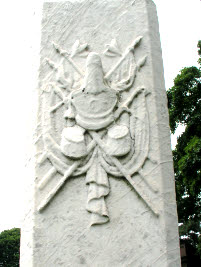
CONSTANS, WILLIAM (1838-1932). Corporal, 55th New York Infantry, Company C; 11th Regiment, Veteran Reserve Corps, Company F. Born in New York City, Constans first enlisted in the United States Army on April 26, 1858, for five years. At that time, he was an upholsterer by trade who was 5′ 8½” tall with brown hair, brown eyes and a fair complexion. On May 19, 1858, he was discharged for disability while a recruit at Fort Columbus, New York.
During the Civil War, he enlisted as a private in the 55th on August 28, 1861, at Staten Island, and mustered in that day. He was promoted to corporal on January 18, 1862, but was reduced to ranks as per his own request on March 30 of that year. Wounded in battle at Fair Oaks, Virginia, on May 31, 1862, he is listed as a deserter on September 15, 1862, at Upton’s Hill, Virginia (though listing him as a deserter appears to be in error). He also served in Company D. According to his obituary in the Brooklyn Daily Eagle, he saw action at Gettysburg, Pennsylvania, and served in Company F of the 11th Veterans.
As per the census records of 1880 and 1900, Constans was an upholsterer by trade. The Brooklyn Directory for 1880-1882 lists him in the furniture business at 807 Fulton Street and the New York City Directory for 1884-1885 lists him as an upholsterer at 1374 Broadway; during those years, he lived at 36 North Oxford Street in Brooklyn. Remaining active in military affairs, he was a member of the Winchester Post #197 of the G.A.R. and an honorary member of the Veterans of Foreign Wars. The censuses of 1920 and 1930 indicate that he was retired. Living to age 93 and residing in Brooklyn for 60 years, he last lived at 320 Halsey Street. The cause of his death was listed as heart disease. As per his obituary in the Brooklyn Daily Eagle, he was survived by three daughters. Section 106, lot 234.
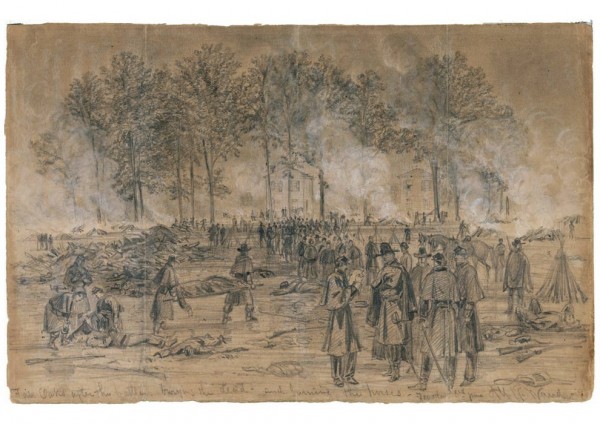
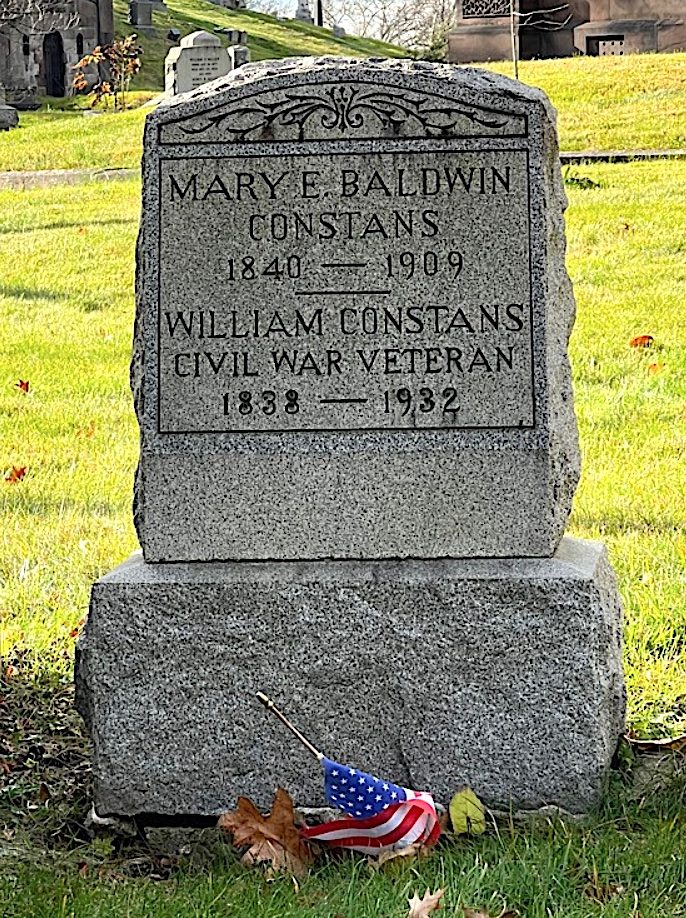
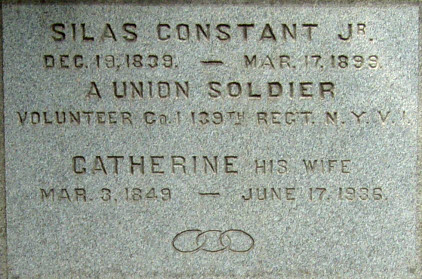
CONSTANT, JR., SILAS P. (1839-1899). Private, 139th New York Infantry, Company I. A New Yorker by birth, he was educated at P.S. 3 on Bedford Avenue in Brooklyn. As per the 1860 census, he was a carpenter living in Baltimore, Maryland. According to his obituary, he was in Baltimore on April 19, 1861, at the time of the attack there by an angry secessionist mob on the 6th Massachusetts, and he took the side of the Union regiment. After he enlisted at Brooklyn on August 29, 1862, he mustered into the 139th on September 9, 1862. The muster roll shows that he was detached as an orderly to brigade headquarters on July 11, 1864, and returned to his unit that October. According to his obituary, he fought in 17 skirmishes and five battles and was among the first infantrymen to enter Richmond, Virginia. On June 19, 1865, he mustered out at Richmond, Virginia.
According to the censuses of 1870 and 1880, he was a house painter living in Brooklyn. he is listed as a painter in the Brooklyn Directories for 1867-1870, 1870-1873 and 1880-1882. Active in Republican Party politics, Constant was a volunteer fireman, then after the War, a paid member of Engine Company #48. He is listed as a fireman in the Brooklyn Directory for 1884-1885. He also belonged to the Odd Fellows and the Brooklyn Volunteer Firemen’s Association. His military service is confirmed by the Veterans Schedule of 1890. In 1897, his application for an invalid pension was granted under certificate 931,406. He was a member of the Ulysses S. Grant Post #327 of the G.A.R. as of June 26, 1894; more than 60 members of that chapter attended his funeral.
As per his obituary in the Brooklyn Standard Union which confirms his Civil War service, Constant was a member of the 139th Veterans’ Association. He last lived at 186 Lexington Avenue in Brooklyn. His death was attributed to Bright’s disease. His obituary notes that a large contingent from the Grant Post and members of the Veterans’ Association accompanied his remains to the cemetery. Catherine Constant, who is interred with him, applied for and received a widow’s pension under certificate 481,029. Section 194, lot 30108.
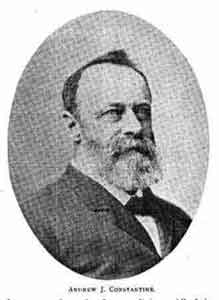
CONSTANTINE, ANDREW JACKSON (1828-1901). Captain, 4th New York Infantry, Company K. A New Yorker by birth, he is listed as being in the mahogany business at 4 Broome Street in Manhattan in the 1857-1862 Brooklyn Directory; during those years, he lived at 46 1st Street. After enlisting on April 23, 1861, at New York City, Constantine mustered into the 4th on May 2, and was commissioned as a captain on July 4 with rank from April 25. In an article in The New York Times on June 4, 1861, he was mentioned as one the officers of the 4th who marched downtown from the Central Park arsenal to North Moore Street in lower Manhattan to board the steamship Alabama to be transported to Fortress Monroe, Virginia. He resigned on May 28, 1862, with an honorable discharge as per Special Order 141 issued that day at Baltimore, Maryland.
Constantine is listed as an inspector in the 1864 Brooklyn Directory and as being in the mahogany business in the 1866 Brooklyn Directory. The censuses of 1870, 1880, and 1900 show that Constantine was still in the lumber business as a mahogany inspector and that he had several domestics in his household. He is listed as either an inspector or in the mahogany business in Brooklyn Directories for 1870-1873, 1875-1876, 1876-1878, 1885-1886 and 1888-1890. According to an article in The New York Times on September 25, 1889, he belonged to an organization of lumber dealers from the New York-New Jersey area who met to promote their interests for the World’s Fair of 1893, which they hoped would be in New York but ultimately was held in Chicago. He last lived on Third Avenue in Brooklyn. He died from apoplexy. Section 11, lot 24569, grave 4.